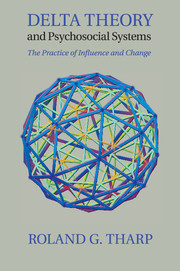Book contents
- Frontmatter
- Contents
- Figures
- Preface
- Acknowledgments
- Section One The Theory of Influence and Change
- 1 Introduction and Overview
- 2 Psychosocial Systems and the Exercise of Influence
- 3 The Zone of Proximal Development, Activity, and Semiotics
- 4 The Means of Influence
- 5 The Organization of Activity
- 6 Unifying the Study of Culture and Psychology
- Section Two The Practice of Influence and Change
- Appendix Criteria, Standards, and Guidelines Necessary for a Unified, Universal Theory
- References
- Index
1 - Introduction and Overview
Published online by Cambridge University Press: 05 December 2011
- Frontmatter
- Contents
- Figures
- Preface
- Acknowledgments
- Section One The Theory of Influence and Change
- 1 Introduction and Overview
- 2 Psychosocial Systems and the Exercise of Influence
- 3 The Zone of Proximal Development, Activity, and Semiotics
- 4 The Means of Influence
- 5 The Organization of Activity
- 6 Unifying the Study of Culture and Psychology
- Section Two The Practice of Influence and Change
- Appendix Criteria, Standards, and Guidelines Necessary for a Unified, Universal Theory
- References
- Index
Summary
Influence and Change: Intended, Adventitious, Inadvertent, and Incompetent
Most attempts to influence others do not succeed. In general, it is a good thing that subjects reject and resist, and that successful influence requires sustained, thoughtful, and purposeful effort. Even among sustained, thoughtful, and purposeful attempts, many are simply incompetent, and the effects, if any, are inadvertent. A classic example is the reinforcing power of negative attention, by which a scolding teacher increases the mischief of children who could better be ignored (Gallimore, Tharp, & Kemp, 1969). The “law of unintended consequences,” which has historically plagued public policy, is of this nature – that is, unintended consequences resulting from ignorance, incomplete analysis, or inadequate theory. Adventitious effects are unplanned and unexpected, perhaps disappointing, and often truly unpredictable. Although not a result of inadvertence in planning, adventitious effects in complex systems are common. Overlapping and interacting psychosocial systems are no exception.
Beyond the intellectual satisfaction of a unified theory of influence and change, there is wide potential utility. Better professional practice should flow from richer theoretical understanding. Personal lives may be more satisfied if we are able to influence others for their own good, just as our own lives will improve if we understand how to be better parents, lovers, pastors, or accountants. Further, there is another use of the knowledge of how influence changes us. I hope the ideas of Delta Theory will come to the attention of general readers as well as social scientists, because there is no human who is not under social influence, much of which is not benign. The world is awash with attempts to influence: blandishments of advertisers; twists of politicians; systematic campaigns of conversion, seduction, or trickery. Knowledge of how influence works will allow us better to resist it. A fuller understanding of how influence leads to change can help us defend against unwanted influence while providing effective influence for those we foster and protect.
- Type
- Chapter
- Information
- Delta Theory and Psychosocial SystemsThe Practice of Influence and Change, pp. 3 - 9Publisher: Cambridge University PressPrint publication year: 2011

